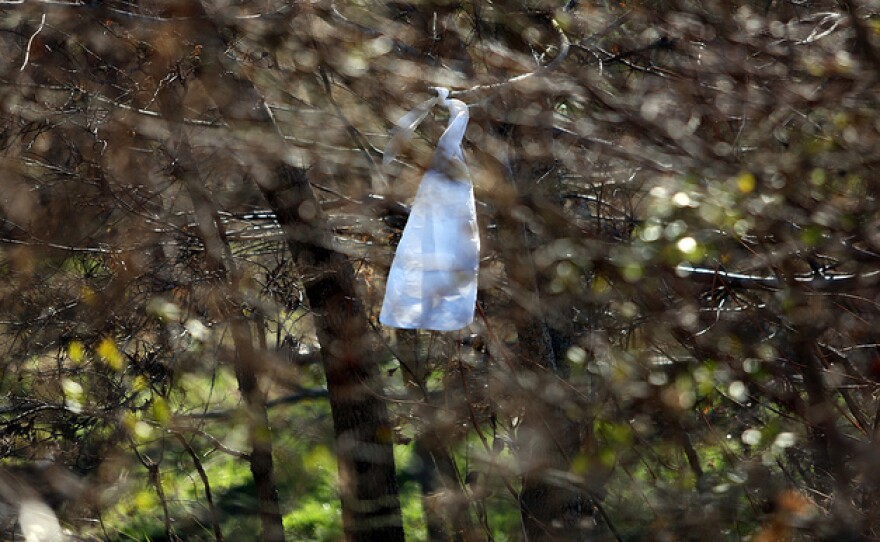Update: Austin Resource Recovery confirms that all 5 horse carcasses on public land were removed Tuesday afternoon.
Original Post: More than two months after flooding in Southeast Austin killed several people and caused millions of dollars in damage, the clean up continues. But some things left behind by the floodwaters are particularly disturbing: at least half a dozen dead horses.
The city has yet to retrieve the bodies of horses killed in the flooding which, in some cases, lie a short distance from people’s homes—people like Lydia Huerta. She says there are moments where the stench from the dead animals is unbearable. Her backyard is directly in front of a city park where some carcasses still remain.
Editor's Note: You can view photos of some of the animals in question here, though the photos are gruesome and may not be suitable for some.
“They’ve been marked," Huerta says, pointing toward the greenbelt. "No one is really sure who marked these animals. But there’s pink flags. And then, next to the animal, there’s a red flag.”
Eleven weeks after the flood, the animals are in different stages of decomposition. One horse hangs from a tree.
Huerta says for weeks she didn’t even know these animals where so close to her home, let alone the park where many kids in the community play, including her own.
"I have a dog and—since I’m right up against the green belt—she’s been back here and she came home one day smelling like death," Huerta remembers. "I had to wash her immediately and I knew then, there’s something back there and it’s close.”
Onion Creek runs along the greenbelt that’s behind Huerta’s house. Before the flood, the horses lived across the creek. There are a couple of ranches and a handful of stables for horses there.
Linda Donovan’s “Ranchito Cinco” is one of those properties.
Donovan’s property ends where the creek begins. She says her horse is one of a handful of animals that survived the flood. But other animals that lived on her property weren’t so fortunate.
"The only reason why some horses made it fine – just swam across and walked up – is: they weren’t hit with debris," says Donovan. "Because it was the old ones that survived. [A] beautiful, athletic Yearling didn’t survive. He got hit with something. It’s the only explanation to me.”
It could have been the 1,000-gallon diesel fuel tank that washed up into her property or one of the many rolls of carpet now lying around that struck the horses.
The uncertainty tormented her for weeks.
But, now, she only wants to know who is responsible for the clean up.
Donovan knows she's partially responsible. But some of it – namely, the debris in the creek – she believes should be taken care of by the city. Like Donovan, Huerta says there’s a moment when the city should step up.
Huerta stands next to a sign that welcomes people to the green belt. The flood knocked it over – but it reads "Austin Parks and Recreation Department." After weeks of calling 311, asking them to remove the horse carcasses. Huerta went straight to Parks and Rec.
“They say they didn’t know who owns this land – but it says right here – 'Parks and Recreation Department.'”
She has been bounced from department to department. Some offices say the county should take care of it, while others say the city should. But exactly who at the city has been hard to figure out. Finally, on Monday, Huerta found a sympathetic ear in Austin Resource Recovery.
“We are now formulating a plan to remove the carcasses and to secure the equipment that will be necessary for this removal,” says ARR spokesperson Emlea Chanslor.
It’s likely all six horses will be removed this week. But, there is still a lot of debris that Huerta and Donovan hope the city will help remove, however, they are still unsure which department is supposed to do it.










